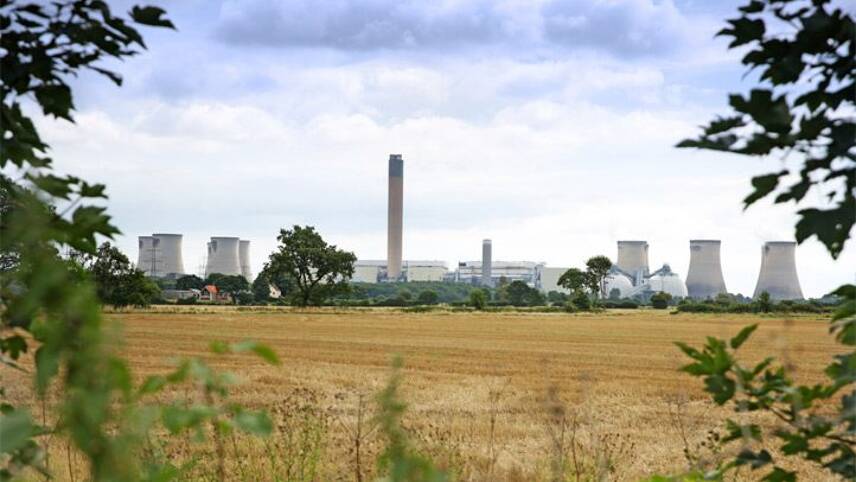Register for free and continue reading
Join our growing army of changemakers and get unlimited access to our premium content

The array will be piloted for 12 months. Image: Drax Group
The array will be installed at the plant this autumn and operate for a pilot period of 12 months, using solvents to capture and store carbon from the flue gases emitted when biomass is burned. Drax believes the technology will capture 300 kilograms of carbon dioxide each day during this period.
Drax has been using bioenergy carbon capture and storage (BECCS) technologies at its plant for several months now. Drax’s existing array, which is being used in partnership with C-Capture, first began capturing carbon in February 2019. It purports to be the first of its kind globally, with Drax claiming that it could eventually enable its Yorkshire site – a former coal-fired plant – to become the world’s first “negative emissions” power station.
With the addition of the new Mitsubishi Heavy Industries array, Drax’s chief executive Will Gardiner believes the firm could deliver 16 million tonnes of negative emissions a year between 2030 and 2050.
Gardiner has notably overseen the creation of Drax’s vision to become a carbon-negative business within the next decade – an ambition set after the firm cut its absolute carbon emissions for the first half of 2019 by 52%, compared to the same period in 2018, and confirmed plans to end coal generation ahead of the Government’s 2024 deadline.
“Our plans to develop ground-breaking BECCS at the power station in North Yorkshire will help to boost the UK’s economy following the Covid-19 crisis and support the development of a zero-carbon industrial cluster in the Humber region – delivering clean growth and protecting thousands of jobs,” Gardiner said.
The cluster to which Gardiner is referring is being developed in collaboration with Drax and National Grid, as part of the UK Government’s ambitions to bring one large-scale CCUS facility online by the mid-2020s and fully decarbonise at least one industrial cluster by 2040.
Progress on the cluster appears to be progressing to time despite the impact of the pandemic. A final roadmap was first published in November 2019 and, since then, the first funding phase has been approved and the providers of the hydrogen and CCS technologies confirmed. The project partners claim that the initiative will contribute £18bn towards UK Gross Value Added (GVA) while safeguarding 55,000 jobs in manufacturing across the region.
Net-zero conundrum
In its recommendations to the UK Government on achieving a net-zero national economy by 2050, the Committee on Climate Change (CCC) concluded that current technological solutions and stronger policy frameworks could enable the UK to reduce emissions by around 97% against a 1990 baseline.
The remaining 3% could be achieved by the scale-up of CCS solutions and hydrogen energy technology – both listed as a “necessity not an option”.
However, CCS is not without its controversies, even when used in conjunction with biomass. CCS technologies are in their infancy and, as such, are broadly small-scale and come with high upfront costs. Moreover, some green groups have argued that carbon capture could act as a “get-out-of-jail-free” card for high emitters, minimising their ambition and action to deliver decarbonisation through activities such as renewable energy investment or energy efficiency improvement.
As for biomass, supporters are keen to point to the fact that it produces fewer emissions than both coal and natural gas, and that it can be considered a renewable resource with strong sourcing procedures and robust supply chain management.
But last year, plaintiffs from six countries filed a lawsuit with the European General Court in Luxembourg, claiming that forest-grown wood shouldn’t be counted as a source of renewable energy under the EU’s 2018 Renewable Energy Directive (RED) II. In response, Drax produced a sustainable biomass strategy aimed at removing deforestation from its pellet supply chains. The company owns and operates three pellet mills in the US, which collectively supply one-fifth of the biomass used at its North Yorkshire power station.
On a UK scale, Chatham House’s energy, environment and resources department is warning that the Conservative Government’s plans for reaching net-zero are over-reliant on both biomass and CCS.
Sarah George


Please login or Register to leave a comment.